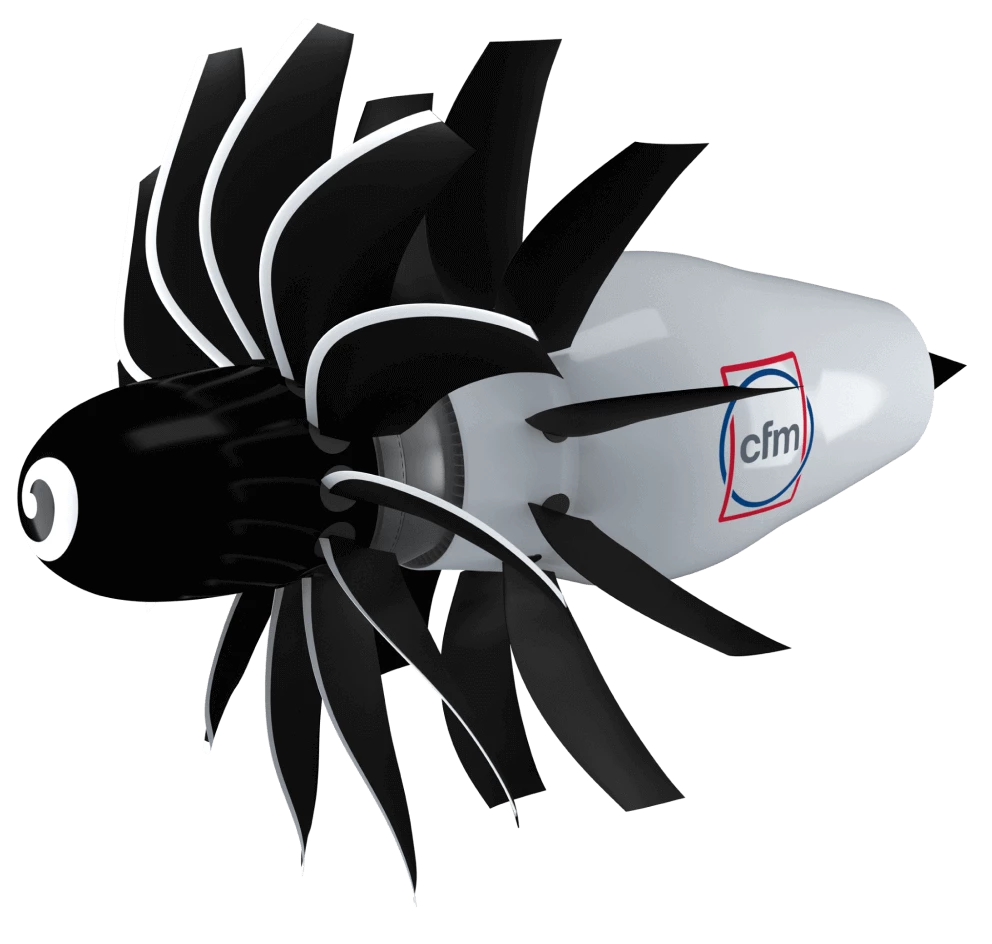GE once thought super-efficient propfans were the future of air travel, until low fuel prices in the late 1980s moved fuel consumption down the list of priorities. Now, it's bringing them back with the CFM Rise, promising 20% fuel savings.
Unducted fans (UDFs), also known as propfans or open rotor engines, first popped up in the 1970s. They look a little odd to the modern eye, with smooth nacelles and air intakes at the front, and two sets of fan blades poking out into open air at the back.
Typically, there's a lot of blades, and they're swept back, and heavily twisted. The rear blades are twisted in the opposite direction to the front ones; sometimes they counter-rotate, others don't rotate at all, acting as variable-pitch stator blades to help with flow recovery.
"The history of aviation propulsion," reads a GE whitepaper, "tells us that all previous breakthroughs in efficiency were achieved by new technologies that allowed for a larger fan size and a higher bypass ratio." Propfans do both, in a way that combines the fuel efficiency of a turboprop with the speed and performance of a turbofan.
The history of General Electric, meanwhile, tells us that this company had a propfan engine just about ready to rock back in 1989, capable of cruising at Mach 0.84 and promising a remarkable 30% fuel efficiency advantage over the popular turbofan engines of the day. The GE36 UDF, built in partnership with Snecma, made it to the prototype and flight testing phases, but once OPEC dropped the oil embargo, fuel prices crashed, and the design was shelved.
Fuel prices have very much uncrashed in recent times, and as aviation faces the challenge of decarbonizing a highly energy-intensive business, propulsive efficiency is very much back in vogue. Batteries and hydrogen can't fully replace kerosene as an energy carrier, so any extra mileage you can squeeze out of your electrons has become critical.
So GE is back on the propfan train again, and through CFM International, a 50/50 joint venture with Safran Aircraft Engines (formerly Snecma) that sadly doesn't produce boots, it announced a new UDF airliner engine called the Rise back in 2021.

Efficiency may have improved across the industry in the last 30-something years, but GE says the Rise engine should still give you 20% more miles than anything else currently on the market for a given amount of energy.
While noise – both in the cabin and on the ground – has been a problem with some previous propfan designs, the CFM team says the Rise engine is being "validated to meet the most stringent ... noise emission requirements."
“The industry can’t reach its net zero ambition by 2050 with status quo incremental improvements in fuel efficiency," says Mohamed Ali, vice president of engineering for GE Aerospace. "Revolutionary technologies are needed. That’s why we believe the time for open fan is now, an advanced engine architecture that could unlock the single greatest jump in generational engine efficiency that CFM has ever achieved. This is supported by our most comprehensive testing roadmap yet to prove out and mature these technologies for the future of flight.”
The Rise engine can be mounted over the tail wings of an airliner, and it's just as happy under a top-mounted wing as it is on top of a low wing. The team has signed a deal with Airbus, which will lead to an open fan demonstrator of some kind that's expected to fly "in the mid-2020s."
For now, there are prototypes built, and CFM has already performed some 400 tests on the ground. Meanwhile, GE Aerospace has been doing some serious simulation work, announcing in a press release on Friday that it's engaged the world's fastest supercomputer.
The Frontier supercomputer, at the US DoE's Oak Ridge National Laboratory, can perform more than one quintillion calculations per second, and as such, it's providing exceptionally detailed computational fluid dynamics (CFD) modeling on how ambient air will interact with these big propfans at speed and altitude.
Innovation in the airliner business tends to happen at a snail's pace; we wouldn't expect to see anything like this on a commercial airliner until well into the 2030s, if it indeed happens at all.
But between this and other efforts like the Rolls-Royce Ultrafan, there could well be a highly efficient propulsion technology ready by the time companies like ZeroAvia and Universal Hydrogen get their clean aviation powertrains built, tested and certified up to full-scale international airliner size.
Check out a short video below, showing a mockup Rise engine being built, complete with variable-pitch rotor blades.
Source: CFM International





